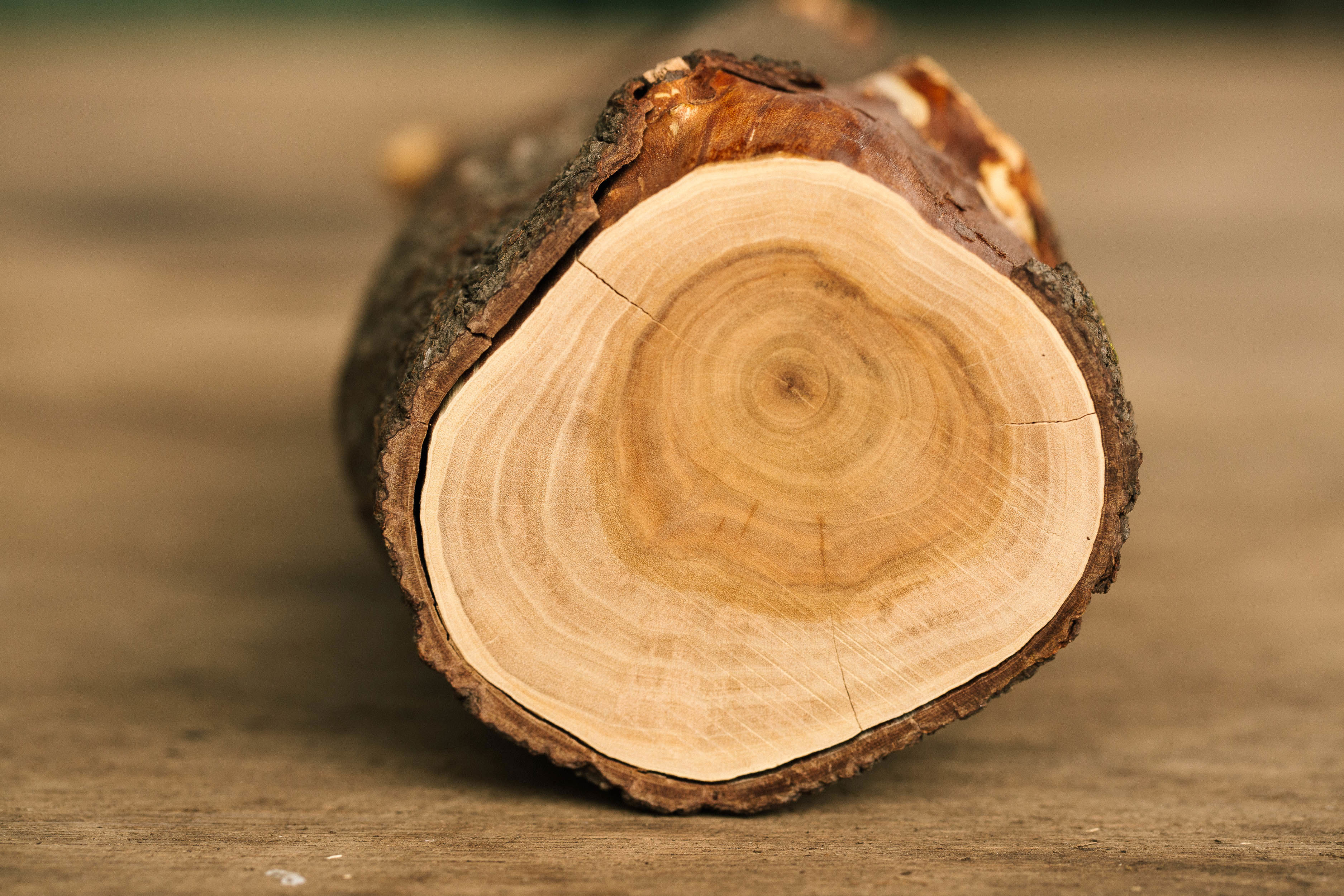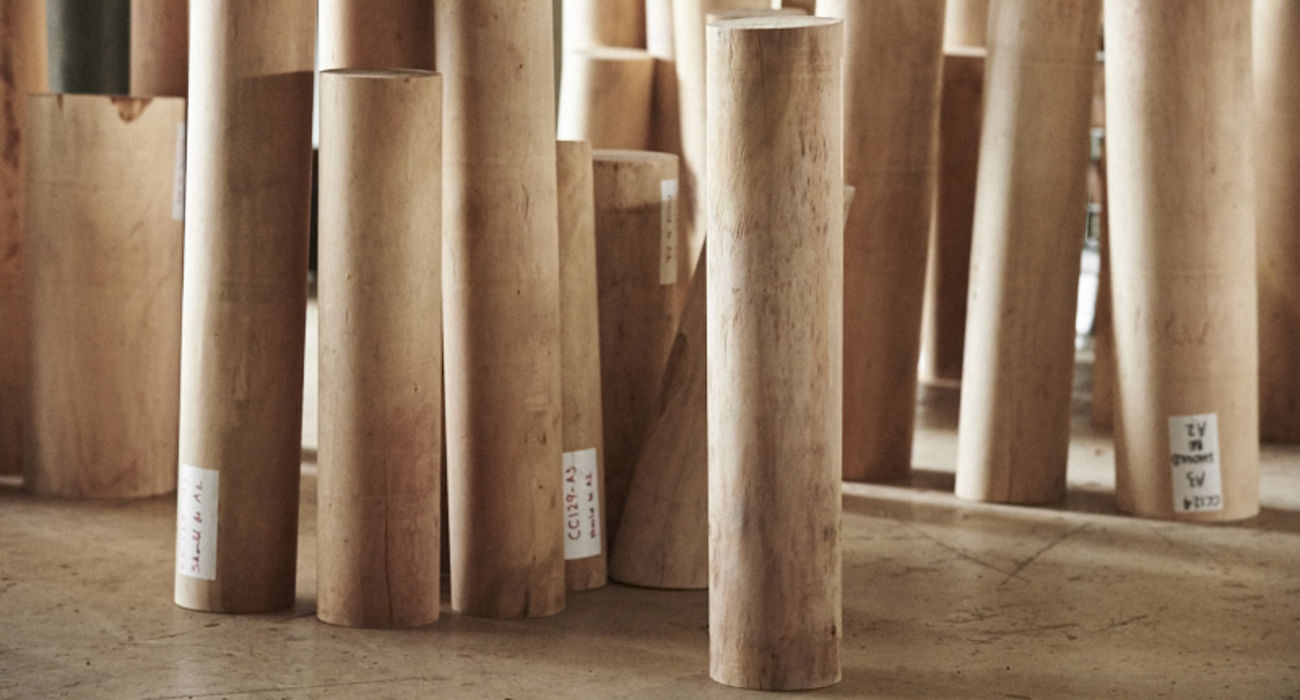Written by Deniz Ataman,
Independent Journalist
Ancient, healing and rare. Out of the 15 varieties of sandalwood, Australian and Indian sandalwood share the same vignettes. Once you smell sandalwood, you experience the same scent that our ancestors would have smelled centuries ago. Time ceases to exist – when we work with sandalwood’s oil or wood, we’re calling upon our past and inviting them to our present. As two of the most coveted varieties, Indian sandalwood (Santalum album) and Australian sandalwood (Santalum spicatum or Fusanus spicatus) are distinct in use and scent, yet both are grown on Australian soil today.
It is said that Indian sandalwood originated in Indonesia and later acclimated to India before reaching the rest of the southern hemisphere.1 For centuries, civilisations have developed their own stories of sandalwood. Known as “chandana” in Sanskrit, sandalwood is used to worship the god Shiva, while the goddess Lakshmi lives in the tree. In Korean folklore, stories surround the holy mountain of Sindansu, which means “Holy Tree of Sandalwood.” Sufi disciples would mark their teachers’ graves with sandalwood paste as a sign of allegiance and respect. Regardless of the folklore and its origins, sandalwood’s underlying symbolism encompasses healing and purity that transcends the ordinary.
Of course, with modern analytical technology, we now understand that sandalwood’s healing and aromatic properties are due to two key compounds: alpha and beta santalol. Both varieties contain a different ratio of santalol concentration, which are key in distinguishing between the two. Indian sandalwood contains 70-90% of these key odour compounds, whilst Australian sandalwood contains between 20-40%.
Indian Sandalwood: The King of Woods
Indian sandalwood, known as the “king of woods” for its perceived superiority in the sandalwood family, is identifiable by its signature odour: sweet, creamy and woody which is due to its high beta-santalol content; as well as its “liquid gold” appearance: a clear, pale yellow to clear and slightly viscous liquid.
It’s the perfect fixative for fragrances giving a formula depth, complexity and of course, longevity; as well as complementing most fragrance families including florals, spices, musks and ambers. But as history and contemporary research has shown us, Indian sandalwood also possesses pharmacological benefits ideal for aromatherapy and skin care.
Its concentrated alpha-santalol content exhibits therapeutic properties when inhaled, aiding the brain in reducing tension to relieve anxiety and stress. Indian sandalwood oil’s benefits extend beyond the nose when absorbed via topical application to the skin. A natural anti-inflammatory, antioxidant and anti-ageing ingredient, S. album is a one-stop dermatology star, particularly in Ayurvedic medicine and is the only species of sandalwood referred to in the Ayurvedic Pharmacopoeia.
Today, we’re seeing ongoing research on its efficacy in reducing the effects of pollution and UV/blue light, and microbiome balance in the skin. Studies have also shown its uses in medicine as an antiseptic, antiscabietic, diuretic; as well as an effective treatment for gonorrhea, bronchitis and bladder infections.2
Australian Sandalwood: A Native Staple
If Indian sandalwood is the king of woods, then Australian sandalwood is the prince. As the name suggests, Australian sandalwood is native to semi-arid areas of Southwest Australia. The First People of Australia, like the Noongar and Martu communities, have benefited from sandalwood’s medicinal properties for centuries.
Referred to as “wolgol” or “uilarac” by the Noongar Nation, the tree’s nuts are prized for its versatility. Elders chew on the nuts to create a paste, which releases active ingredients that treat skin ailments and wounds, as well as aching joints, while the wood is burnt to create a natural mosquito repellent.
As mentioned earlier, Australian sandalwood contains approximately 20-40% of alpha and beta santalols, which gives it a distinct odour and application compared to its counterpart. While it still harbors the signature sandalwood “woody” base scent, the oil’s unique composition exhibits a greener, fresher top note; even earthy, spicy, terpenic and smoky. Today, you’ll find the oil used primarily as a base in fragrance formulations and as a therapeutic accompaniment to aromatherapy.

Cultivating Sandalwood
The process to grow both species is essentially the same. Both are hemi-parasitic trees, meaning that the trees receive key nutrients from surrounding host plants. It takes botanical collaboration to say the least for a tree to develop its oil-rich heartwood. Host plants like Acacia acuminata siphon its nutrients through the roots, feeding the tree and enriching the oil. It is important to note that whilst sandalwood tends to prefer hosts of the Fabaceae family, sandalwood is able to select hosts within its natural environments.
Both trees require between 15-20 years of maturation, where the oil develops in the centre—or the heartwood—of the tree trunk. Once the trees mature, the oil is steam distilled for a myriad of uses in fine fragrance, dermatology and flavour. Given its larger, straighter trunk, Indian sandalwood heartwood can also be chopped up into logs and further ground into wood chips or powder. Typically, wood is carved into prayer beads and sculptures or burnt as incense for religious and spiritual purposes.
Business of Sandalwood
Another distinction between the two varieties is their respective histories. Beginning in the early 19th century, the harvest and export of Australian sandalwood has been an essential part of Western Australia’s (WA) economy. Initially, the wood was exported as incense to Asia; and later in 1929, the development of the essential oil industry gave Australian sandalwood a global presence as a fragrance ingredient. Prior to its export, Australian sandalwood had its place in Indigenous communities as a treatment for various skin conditions and ailments.
With a 4,000-year history, Indian sandalwood’s value as a wellness ingredient has only skyrocketed. Due to its concentrated santalol content and multi-faceted healing properties, Indian sandalwood is in high demand around the world. Globally, it is recognised as a vulnerable species by the International Union for the Conservation of Nature due to centuries of illegal poaching, harvesting and adulteration of sandalwood grown in the wild. It is estimated that 90% of Indian sandalwood in the marketplace is sourced from illegal harvests. At Quintis, we believe it’s crucial to create a traceable and ethical supply of Indian sandalwood without sacrificing its quality.
In order to secure both Indian and Australian sandalwood’s future (remember, it takes years for a tree to mature), we developed a tree breeding and replanting program that has generated over 5.5 million trees across 12,000 hectares of Australian soil. This enables us to continue cultivating and studying sandalwood’s benefits to share with the world.
We can take nods from sacred texts and modern research to come to the same conclusion: sandalwood is truly nature’s wellness ingredient. Both varieties we discussed here offer their own unique traits olfactively and functionally. When we take the time to work with Australian and Indian oils, we’re tapping into history, knowing well that these same elixirs will be preserved for the future.
References
- McHugh, J. (2019). A History of India: Perfumery & Aromatics. Perfumer & Flavorist, 44(8), 36–40. https://www.perfumerflavorist.com/fragrance/rawmaterials/natural/A-History-of-Indias-Perfumery--Aromatics-513244461.html
- K. Parthasarathi and K. H. Shankaranarayana (1984). Synthetic Sandalwood Aroma Chemicals. Perfumer & Flavorist, 9(2), 17–20. https://www.perfumerflavorist.com/fragrance/rawmaterials/synthetic/Synthetic-Sandalwood-Aroma-Chemicals-374280921.html
- Lawrence, B. (2009). Progress in Essential Oils. Perfumer & Flavorist, 34(5), 52–56. https://www.perfumerflavorist.com/fragrance/rawmaterials/natural/42814897.html
Recommended peer-reviewed articles:
- Kumar AA, Joshi G, Ram HM. Sandalwood: history, uses, present status and the future. Current Science. 2012:1408-16.
- Fox JED. Sandalwood: The Royal tree. Biologist. 2000;47(31).
- Hettiarachchi, D. S. The good, the bad and the ugly: a review on sandalwood quality. In: Nageswara-Rao, M., Soneji, J. R. & Harbaugh-Reynaud, D. T., eds. International sandalwood symposium, 2012 Honolulu, Hawaii. Lulu press, 207-217.
- Brand, J. E., Fox, J. E. D., Pronk, G. & Cornwell, C. 2007. Comparison of oil concentration and oil quality from Santalum spicatum and S. album plantations, 8–25 years old, with those from mature S. spicatum natural stands. Australian Forestry, 70, 235-241.
